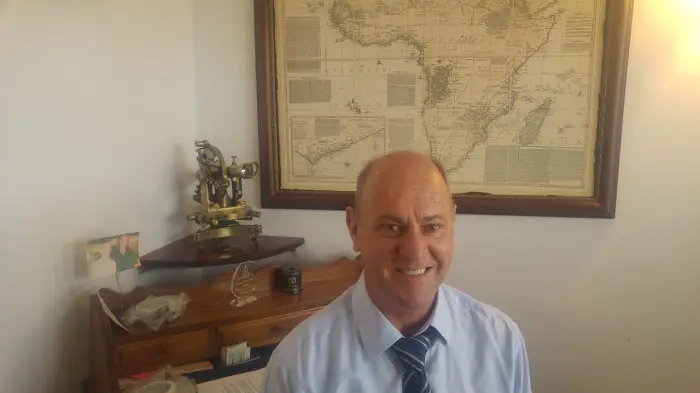Dave Beattie is the Managing Director of Autobuild Africa (Pty) Ltd which distribute a wide range of trusted surveying equipment. The company is the leading distributor in South Africa of levels, theodolites and surveying accessories. They supply COMNAV, GNSS, Optech Lidar Scanners, Hexcel Heron mobile scanners, Geoallen Total Stations, Precision levels, Theodolites, Lasers and Rotosure measuring wheels. The company roots go back to P J Yelland (Pty) Ltd which was founded in Durban in 1929. Autobuild Africa (Pty) Ltd has supported the South African Surveying Community with great customer service and reliable instruments.
Construction Review Magazine conducted an interview with Dave Beattie on construction surveying and he had the following to say.
CR: How does Autobuild Africa see the African drones in construction market?
Dave: Drones (correct name UAV’s) are playing a bigger role in the construction market. UAV’s are becoming easier to operate, more affordable and they will soon be a feature on most construction sites. They can be used in all phases of construction. When planning the construction, be it a road, a bridge or a building, the existing ground needs to be surveyed to assist with planning and design.
Then when earthworks start the progress can be measured, cut and fill volumes determined on an ongoing basis. During the erection and at completion of the project, photos and videos taken by UAV can be really useful, to monitor progress and for marketing purposes.
In most parts of the world the use of UAV’s are strictly controlled, and one needs a qualified UAV pilot to operate them. In practice however, and especially in Africa, UAV’s are already been used extensively, and in many cases regulations do not exist or are ignored.
Producing maps from UAV’s is made relatively simple by the software supplied. On a PC tablet using Google Earth one defines the area to be mapped. The software then plans a flight path, the UAV is launched, flies the area taking aerial photos, and returns. The software then produces a map of the area with contours.
Most UAV’s used for surveying do not have accurate GPS boards, and so prior to flying, a surveyor needs to place highly visible targets, and , using a survey GNSS determine the exact co-ordinates of the targets. These targets are then identified from the photos and used to adjust the resultant maps for scale, tilt etc.
Nowadays, sophisticated small GPS PC boards can be carried by the drone, and used to determine highly accurate positioning of the UAV at the time of each photo.
The other technology is to mount a tiny 3D laser scanner on the UAV, which measures millions of points on the ground, which are similarly used to produce maps. This technology is still relatively expensive.
CR: Which are the most popular survey technologies being applied in Africa currently?
Dave: Conventional surveying using total stations and GNSS are still by far the most used technologies. Both these technologies are improving all the time, and becoming more affordable.
3D laser scanning requires a larger initial outlay, but in many instances, for specific purposes it can be cost effective. For example Gexcel, a research and development company in Europe, has developed a wearable 3D mobile scanner, that can give an accurate 3D plan in real time. So one can for example scan an area 1 day, then a week later scan the same area, and in real time, on a tablet held by the operator, one can see all changes to the area – movement of soil, construction progress etc etc.
CR: What are the challenges in the African market in terms of application and maintenance?
Dave: Access to the internet, poor roads to remote sites, and logistics are some major challenges. Often a surveyor may experience a problem that requires immediate support from the equipment supplier, but has no cellphone or internet access. The lack of local representation and support also gives its own challenges.
CR: What do you think can be done to overcome these challenges?
Dave: Many of these challenges cannot be overcome without massive investments. Most importers and suppliers who are based in South Africa are now expanding their footprint north into Africa. The company I am with now gets over 50% of our sales from outside South Africa. Due to the distances involved it is important to train users of equipment well to minimize problems and resultant downtime. One challenge close to my heart is affordability. I have found that prices of products increase rapidly once they leave South African borders. As buyers become more astute this will improve and competition will ensure that prices reduce.
CR: How is the future of survey in construction in Africa looking?
Dave: There is so much development still needed and taking place. Although the construction market in South Africa is slow but stable, there are huge opportunities in other African countries.
As communications – internet and travel improve, so will surveying become easier and more affordable.
